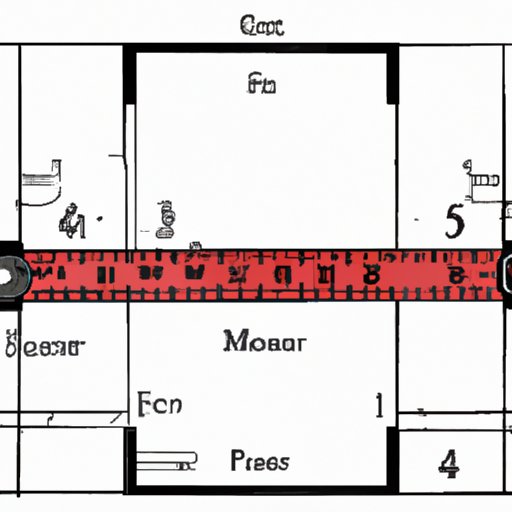Introduction
Measuring square feet can seem daunting, especially when dealing with irregular shapes or complex projects. Whether you’re a DIY enthusiast or a real estate professional, accurate measurements are crucial for proper planning and budgeting. In this article, we will explore the basics of calculating square footage, the tools you’ll need, and also tips and tricks to make your calculations easier and more accurate.
The Basics
A square foot is a unit of area measurement equal to a square with one foot sides. To calculate the square footage of a rectangular or square space, simply multiply the length and width of the area. For example, a room that is 10 feet long and 12 feet wide has a square footage of 120 square feet (10 x 12 = 120).
Square footage is often used in real estate to determine the value and price of a property. It is also crucial when planning DIY projects such as installing flooring or painting a room. Knowing how to calculate square footage properly can save you time, money, and headache.
Tools
Before measuring square feet, it’s important to have the right tools for the job. Here are some of the tools commonly used to measure square footage:
- Tape measure: A tape measure is essential for precise measurements. Make sure to choose a sturdy one with a lock feature to hold the measurement in place.
- Laser measure: A laser measure is ideal for long distances or hard-to-reach spaces. It uses a laser to accurately measure the distance to a surface.
- Square feet calculator: There are many online calculators that can help you quickly determine the square footage of a space. Simply enter the length and width measurements, and the calculator does the rest.
Each tool has its pros and cons. A tape measure is necessary for accuracy, but can be tedious for large projects. A laser measure is fast and efficient, but expensive. A square feet calculator is helpful for quick estimates, but may not always be accurate. Choose the tool that works best for your needs.
Irregular Shapes
Measuring the square footage of irregular shapes can be tricky, but it’s easily done with a little math. For example, to calculate the square footage of a triangular area, measure the base and height of the triangle and divide it by 2. For circular areas, measure the diameter and divide it by 2 to get the radius. Then, use the formula πr² to calculate the square footage. For L-shaped rooms, measure each section separately and add them together.
Walls and Ceilings
Measuring wall and ceiling square footage is important for painting or wall covering purposes. To measure, first measure the length of the wall or ceiling, then the height. Multiply the two measurements together to get the square footage. To adjust for windows, doors, or room angles, simply subtract the square footage of those areas from the total square footage of the wall. For example, if a window takes up 10 square feet of a 100 square foot wall, subtract 10 from 100 to get 90 square feet.
Importance of Accurate Measurements
Accurate measurements are crucial for real estate, renovation, and construction projects. Wrong measurements can lead to overbudgeting, delays, or even dangerous situations. For example, inaccurate measurements for building materials can lead to wasted resources and higher costs. Measuring inaccurately on a construction site could lead to accidents or injuries. Taking the time to measure accurately will save time, money, and hassle in the long run.
Tips and Tricks
Here are some tips and tricks to help you measure square footage accurately and efficiently:
- Break up large areas into smaller sections for easier measurements.
- Use pre-measured tiles or pieces as a guide for measurement.
- Label all measurements and sketches for easy reference.
- Double check all measurements before cutting or ordering materials.
- Practice and be patient – measuring square footage can take time and practice to master.
Conclusion
Measuring square footage may seem daunting, but with the right tools and techniques, it’s easily done. Accurate measurements are crucial for real estate, DIY projects, and construction. By using the tips and tricks provided and taking your time to measure properly, you can ensure your projects are completed efficiently and on budget.
